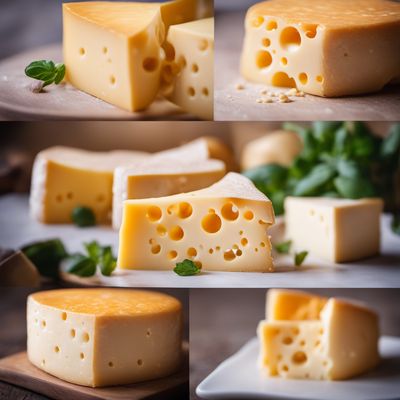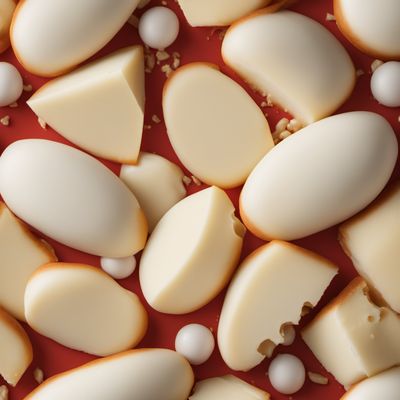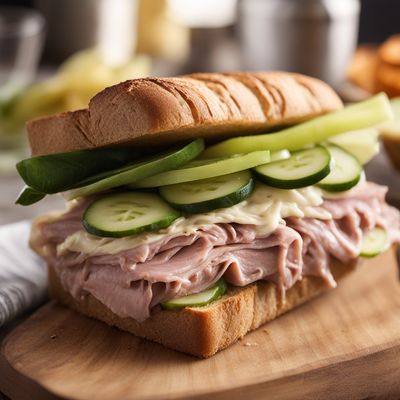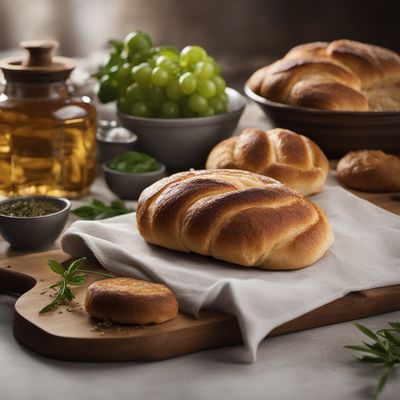
Ingredient
Cheese, provolone
The Melting Marvel
Provolone cheese is a semi-hard cheese with a pale yellow color and a smooth, creamy texture. It has a mild, slightly tangy flavor that becomes more pronounced with age. Its distinctive taste and excellent melting properties make it a popular choice for sandwiches, pizzas, and pasta dishes.
Origins and history
Provolone cheese originated in Southern Italy and is named after the village of Provolone in the region of Lombardy. It has been produced since the 19th century and is deeply rooted in Italian culinary traditions. Today, it is enjoyed worldwide and is an essential component of many Italian-American dishes.
Nutritional information
Provolone cheese is a good source of protein and calcium. It also contains essential vitamins such as vitamin A and vitamin B12. However, it is high in saturated fat and sodium, so it should be consumed in moderation.
Allergens
Provolone cheese may contain lactose, which can cause allergies or intolerances in individuals with lactose sensitivity.
How to select
When selecting provolone cheese, look for a cheese that is firm and free from any mold or discoloration. It should have a slightly elastic texture and a pleasant aroma. Opt for provolone cheese that has been aged for a longer period if you prefer a stronger flavor.
Storage recommendations
To maintain the freshness and quality of provolone cheese, it should be stored in the refrigerator in its original packaging or wrapped tightly in plastic wrap. It is best consumed within a week of opening, but can be frozen for longer storage.
How to produce
Provolone cheese is typically produced by professional cheese makers using specialized techniques. However, it is possible to make a simple version of provolone cheese at home by following a cheese-making recipe and using the appropriate ingredients and equipment.
Preparation tips
Provolone cheese can be sliced and used in sandwiches, melted on pizzas or pasta dishes, or grated and added to salads or soups. It pairs well with cured meats, olives, and roasted vegetables. For a delightful appetizer, wrap slices of provolone cheese with prosciutto and bake until golden and bubbly.
Substitutions
Mozzarella cheese can be used as a substitute for provolone cheese in most recipes, as they have similar melting properties and mild flavors. However, mozzarella has a softer texture and milder taste compared to provolone.
Culinary uses
Provolone cheese is commonly used in Italian and Italian-American cuisines. It is a staple in dishes such as lasagna, meatball subs, and chicken Parmesan. It is also a popular choice for cheese boards and antipasto platters.
Availability
Provolone cheese is widely available in supermarkets and specialty cheese shops. It is commonly produced in Italy, the United States, and other countries with a strong cheese-making tradition.
More ingredients from this category » Browse all

Cheese, leicester
The Bold and Tangy Delight: Unveiling the Secrets of Leicester Cheese

Cheese, oltermanni
The Creamy Delight

Cheese, morbier
Morbier: The Creamy Delight from the Jura Mountains

Cheese, vacherin fribourgeois
The Creamy Delight: Vacherin Fribourgeois Cheese

Cheese, toma piemontese
The Creamy Delight

Cheese, morski
The Oceanic Delight: Exploring the Unique Flavors of Morski Cheese

Cheese, graddost
Graddost Delight

Cheese, herrgardost
The Swedish Delight: Herrgardost Cheese

Cheese, danbo
The Danish Delight: Exploring the Savory World of Danbo Cheese

Cheese, podlaski
The Delightful Polish Cheese

Cheese, lubelski
The Creamy Delight: Exploring the Richness of Lubelski Cheese

Mozzarella cheese (specific for pizza)
The Melting Marvel: Mozzarella Cheese for Perfect Pizza
Recipes using Cheese, provolone » Browse all

Classic Cheesesteak
Philly's Finest Cheesesteak

Cajun Vastedda
Spicy Cajun Twist on Sicilian Vastedda

Argentinian Miga Sandwiches
Layers of Flavor: Argentinian Miga Sandwiches

Crispy Provolone and Anchovy Crostini
Savory Delights: Crispy Provolone and Anchovy Crostini

Zesty Z-Man Sandwich
The Ultimate BBQ Brisket Sandwich: Zesty Z-Man Delight

New York-Style Pizza
Big Apple Delight: Authentic New York-Style Pizza

Merguez Cheesesteak with Sweet Potato Fries
Spicy Twist on a Philly Classic: Merguez Cheesesteak with Sweet Potato Fries

Steak Bomb Explosion
Sizzling Steak Bomb Delight

Bauru Sandwich Recipe
Savory Brazilian Delight: Bauru Sandwich

Panini di Sant'Antonio with a Caribbean Twist
Caribbean-Inspired Panini di Sant'Antonio: A Fusion of Italian and Dominica Flavors

Pan de Acambaro with a Philly Twist
Philly Cheesesteak Stuffed Pan de Acambaro

Authentic Philly Cheesesteak
Savory Steak and Cheese Delight